Are you looking for creative and practical daycare classroom decoration ideas? Daycare classroom decoration ideas can improve your classroom environment and give children a friendly and stimulating place to grow up. However, not all decorations are good, and too many unnecessary decorations in the classroom can make the daycare classroom noisy and distracting for the children.
Daycare classroom decoration ideas is about creating a nurturing, stimulating environment that supports a variety of activities and learning styles. It requires careful selection of colors, furnishings and educational materials that are age appropriate and conducive to learning and growth. The goal is to create a space where children are excited to explore, learn and grow.
As educators and caregivers, daycare classroom decoration ideas is something that should keep the interests of young learners at the forefront of your mind. Our brand understands the importance of creating a nurturing space that fosters imagination, curiosity and learning. That’s why we’ve compiled these daycare classroom decoration ideas to transform your daycare classroom into a vibrant and educational haven.
Why Daycare Classroom Decoration Ideas Are Important
The importance of daycare classroom decoration ideas cannot be overemphasized. Beautiful daycare classroom decoration ideas help develop cognitive skills, foster emotional well-being, and promote social interaction. Based on my 20+ years of experience in the education industry, we have found that classrooms that balance aesthetics and function provide the best learning experience. The décor of the classroom should reflect a sense of warmth and inclusivity so that children feel safe and valued. This includes choosing safe and comfortable furniture, using colors that enhance mood and attention, and incorporating elements that reflect the children’s diverse backgrounds.
Furthermore, the way a classroom is decorated can greatly influence a child’s behavior and attitude towards learning. A cluttered, disorganized space can lead to distractions and restlessness, while a well-organized, engaging classroom can promote focus and eagerness to engage in activities. It’s also important to remember that the classroom environment serves as a third teacher – it can either stimulate or hinder the natural learning process of children.
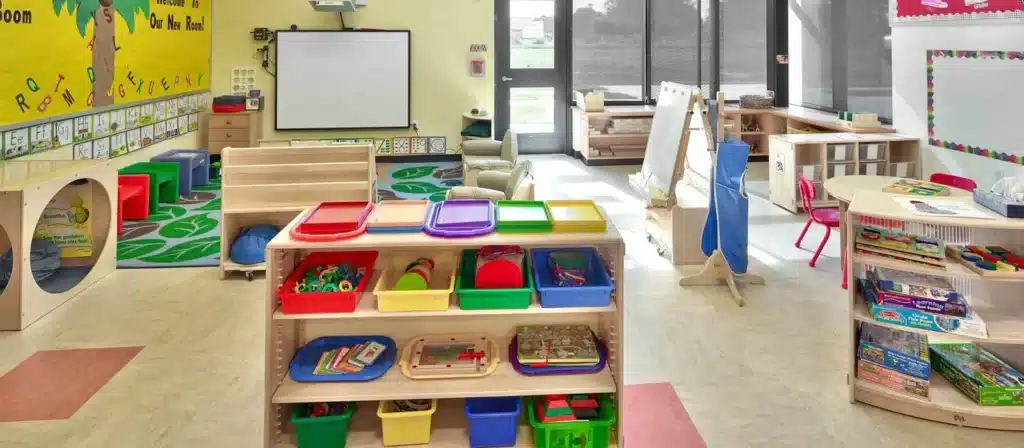
What are the key elements of daycare classroom decoration ideas?
1.Daycare Classroom Decoration Ideas: Color
Color has the ability to affect mood, energy levels, and even cognitive function. In daycare classroom, choosing soothing and stimulating colors is crucial. For example, blue is known for its calming effect and can be used in areas designated for rest or quiet activities. On the other hand, yellow is bright and vibrant, making it perfect for play areas or creative corners.
Red is another stimulating color, but it should be used with caution as it can appear in large quantities. Green is considered to be the most calming color for the eyes and can create a sense of balance and serenity in the classroom. It is perfect for areas where concentration is needed, such as reading corners or puzzle corners.
When incorporating color into a daycare classroom, it’s also important to consider color combinations. Harmonious color schemes can create a visually appealing environment that enhances the overall learning experience. However, it’s important to avoid overly bright or contrasting colors as they can be distracting and overstimulating for young children.
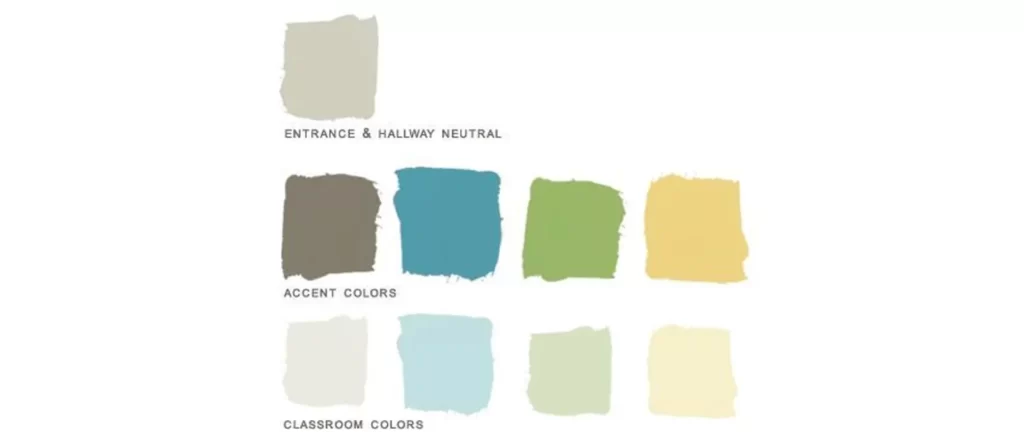
2.Daycare Classroom Decoration Ideas: Furniture
The right classroom furniture is the backbone of any daycare classroom. It should be inviting, durable, and appropriate for the age group you’re catering to.
- Safety and Comfort
All daycare furniture must be safe for children. Rounded edges, stable construction and non-toxic materials are a must. Comfort is also key. Children are more likely to engage and learn when they are sitting comfortably. This means adjustable chairs and tables are very beneficial. - Functionality and Flexibility
Consider furniture that serves multiple purposes. For example, tables with built-in storage can be used for both activities and organization. Flexibility is also important. Furniture that can be easily moved or reconfigured allows the classroom to adapt to different activities and learning styles. - Aesthetic Appeal
Bright colors and playful designs can stimulate young minds and make the learning environment more enjoyable. - Multi-functionality and Storage
In a daycare classroom, space may be limited. Choose versatile furniture for daycare classroom decoration, such as tables with built-in storage or stackable chairs. Efficient storage solutions are essential for organizing supplies and keeping the classroom tidy.
3.Daycare Classroom Decoration Ideas: Classroom Layout
The layout of a daycare classroom impacts the flow of activities and the overall learning experience. A well-planned layout facilitates movement, minimizes distractions, and provides areas for different types of activities.
- Zoning for Activities
Create distinct zones for various activities such as reading, arts and crafts, and quiet play. This not only helps in organizing the classroom but also aids children in understanding and adhering to the classroom’s routines. - Accessibility and Movement
Ensure that the classroom layout allows for easy movement and accessibility. Children should be able to move freely between different areas without obstructions. This is crucial for their physical development and for fostering independence. - Visibility and Supervision
Arrange the classroom so that every area is visible to the teacher. This ensures that children are supervised at all times, contributing to a safer environment.
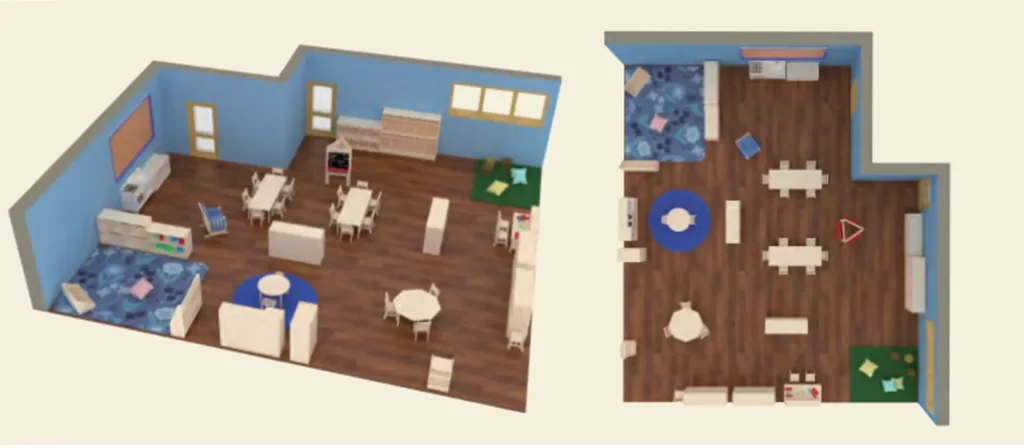
4.Daycare Classroom Decoration Ideas: Floors, Windows, and Walls
The foundation of any room décor begins with the floors, windows and walls. Daycare classroom decoration should choose materials and designs that are safe, easy to clean and visually stimulating.
Window Coverings and Decals:
- Blinds and Window Shades: Opt for cord-free options to ensure safety. These coverings let you control natural light levels, creating an ideal learning atmosphere.
- Decorative Touch: Use decals and other treatments to enhance aesthetics and reduce UV exposure, adding a playful element to the classroom.
Wall Decorations:
- Educational and Inspirational Posters: Classroom posters and wall decorations can incorporate a classroom themes. They can include educational themes like alphabets, maps, and nature diagrams, or introduce students to art.
- Art Display Wall: An essential feature in any classroom, it showcases students’ artwork, fostering pride and highlighting the class’s unique character. Some companies offer custom murals based on student art for a special touch.
Flooring:
- Rugs and Play Mats: Choose tightly-woven carpets or foam play mats in solid colors to prevent small objects from becoming hazards. A low carpeted platform can serve as a mini-stage for dramatic play.
- Non-toxic Materials: Always select non-toxic materials like lead-free paints and phthalate-free wallpapers for floor and wall coverings. Avoid overly busy patterns that can distract students.
Classroom Essentials:
- Calendar: Display a calendar prominently for tracking days and anticipating events. This aids in teaching about time and allows for personalization with stickers reflecting students’ interests.
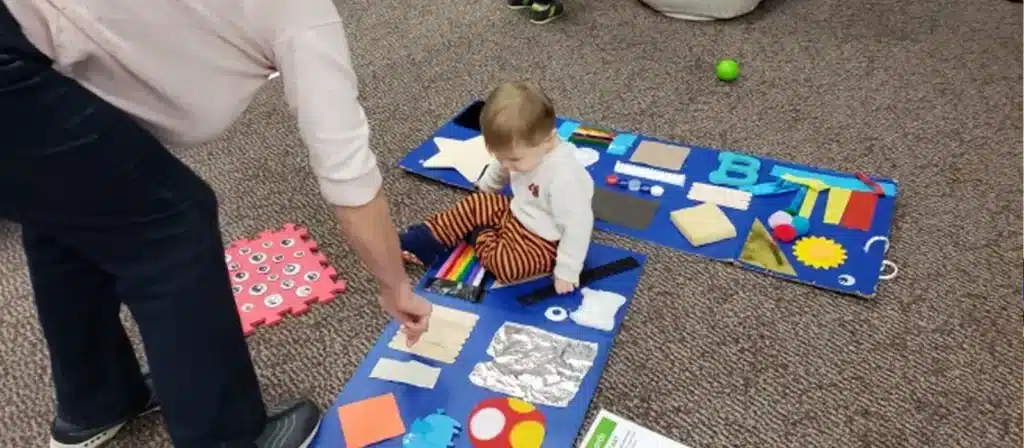
5.Daycare Classroom Decoration Ideas: Sensory Elements
Sensory elements in a daycare classroom decoration can significantly enhance the learning experience for children. These can include visual, tactile, auditory, or olfactory elements, designed to stimulate learning and development.
- Visual Elements: Color and Patterns
Use a mix of vibrant and calming colors to create a balanced visual environment. Patterns and shapes can be used to stimulate visual learning. For example, geometric shapes or thematic patterns that change with the curriculum. - Tactile Experiences: Textures and Materials
Incorporate a variety of textures in the classroom. Rugs, cushions, and different materials for play can stimulate the sense of touch. - Auditory and Olfactory Elements
Background music or natural sounds can create a calming or stimulating atmosphere. A classroom that smells fresh and clean contributes to a pleasant and healthy learning environment.
6.Daycare Classroom Decoration Ideas: Natural elements
Incorporating natural elements into daycare classroom decoration has many benefits for children’s development. Adding natural elements such as plants and sunlight can create a calm and welcoming atmosphere for children. Natural light can also improve a child’s mood and energy levels. Nature-themed decorations and small indoor gardens where children can learn to care for plants and reduce stress. It also provides opportunities for hands-on learning about biology, ecology and responsibility.
Daycare Classroom Decoration ideas by Age Group
Designing a daycare classroom takes careful consideration of the children you serve and their needs based on their age. The classroom Decoration and daycare furniture you use should be practical, developmentally appropriate, and promote a variety of activities and learning.
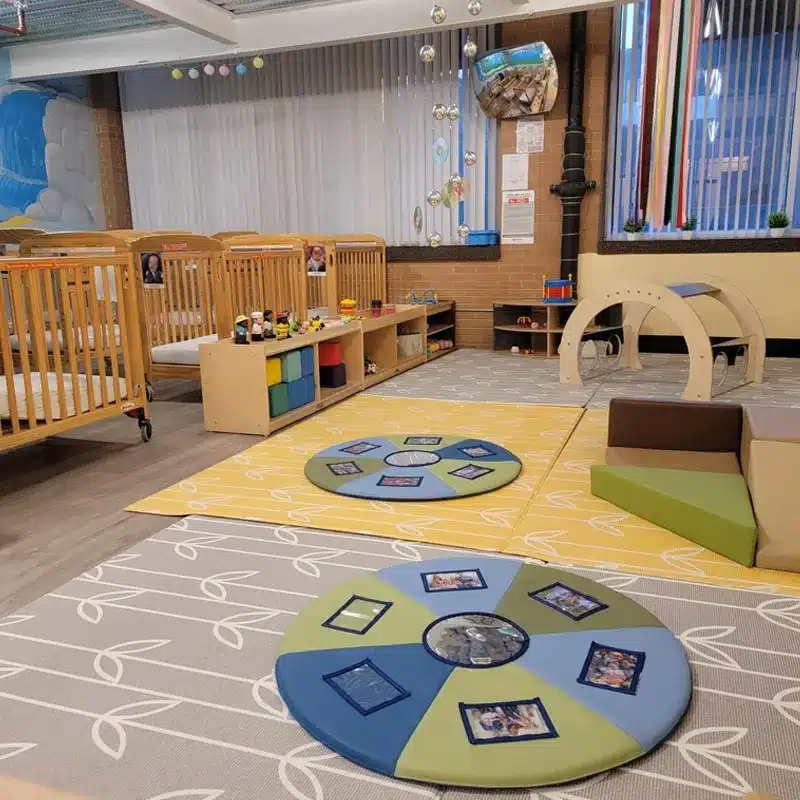
Ideas for infant rooms (under 1 year):
- Cubby storage
- Classroom storage
- Station for changing diapers
- Crib area
- Feeding area
- Crawling and developmental play space
For infant, focus on bright, primary colors and simple shapes to stimulate sensory development. Include tactile elements like soft fabrics and foam puzzles that they can touch and explore.
Ideas for toddler rooms (1-2 years old):
- Cubby storage
- Classroom storage
- Station for changing diapers
- Children’s toilets and sinks
- Eating area
- Crib or cot area
- Crawling and developmental play space

For toddler children, incorporate more complex educational elements. This can include alphabet and number displays, simple maps, and nature elements. Include interactive elements like dress-up corners or mini science labs to encourage exploration and imaginative play.
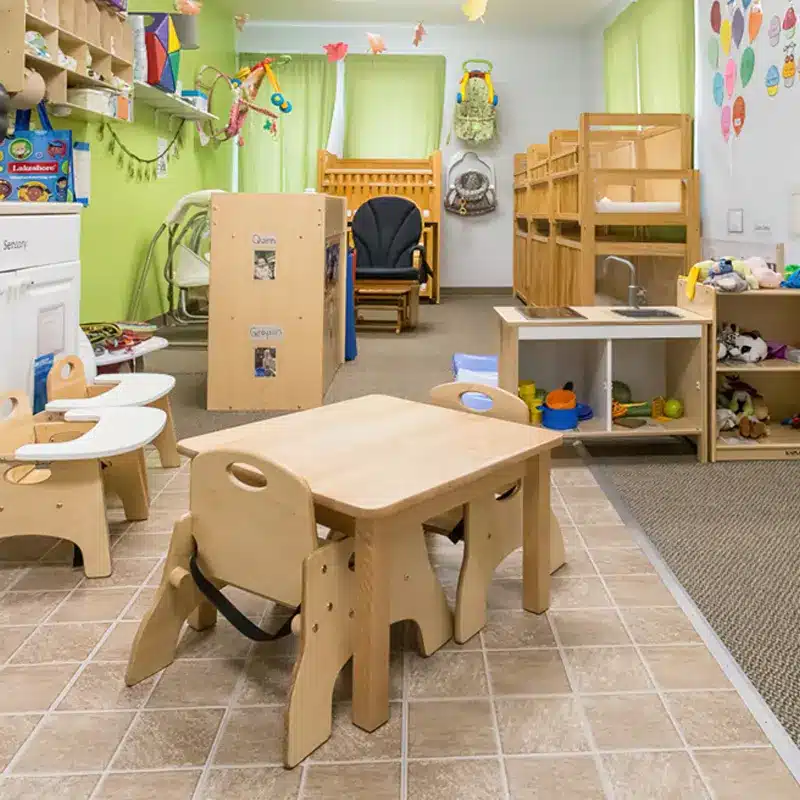
Ideas for older toddler rooms (2-3 years old):
- Cubby storage
- Classroom storage
- Station for changing diapers
- Children’s toilets and sinks
- Eating area
- Nap area
- Open, unrestricted area for activities and lessons
For older children, create areas that foster independent learning and group activities. Include reading nooks, art stations, and areas for science and math activities. Decor should be more sophisticated, with real-world educational materials like globes, time zones maps, and historical timelines.
Change Decorations Throughout the Year
Changing decorations throughout the year keeps the environment fresh and engaging for children. Seasonal themes can be a fun way to do this. Decorate with autumn leaves and pumpkins in the fall, snowflakes and winter scenes in the winter, flowers and rainbows in the spring, and sun and beach themes in the summer.
Holiday decorations for events like Halloween, Christmas, and Easter can also add excitement and variation. Additionally, consider themes related to what children are learning. If the focus is on animals, a jungle theme could be exciting. If they are learning about space, transform the room into a mini galaxy.
Creating Daycare Classroom Activity Areas
The daycare classroom has specialized areas to meet a variety of developmental needs and activities. Classroom décor also needs to be adapted to the different areasThese include check-in/check-out areas, cubicle storage areas, quiet activity areas, open activity areas, messy activity areas and age-specific areas. Each of these areas provides unique opportunities for learning and growth, ensuring that each child’s developmental needs are met in a well-rounded, engaging and safe daycare classroom.
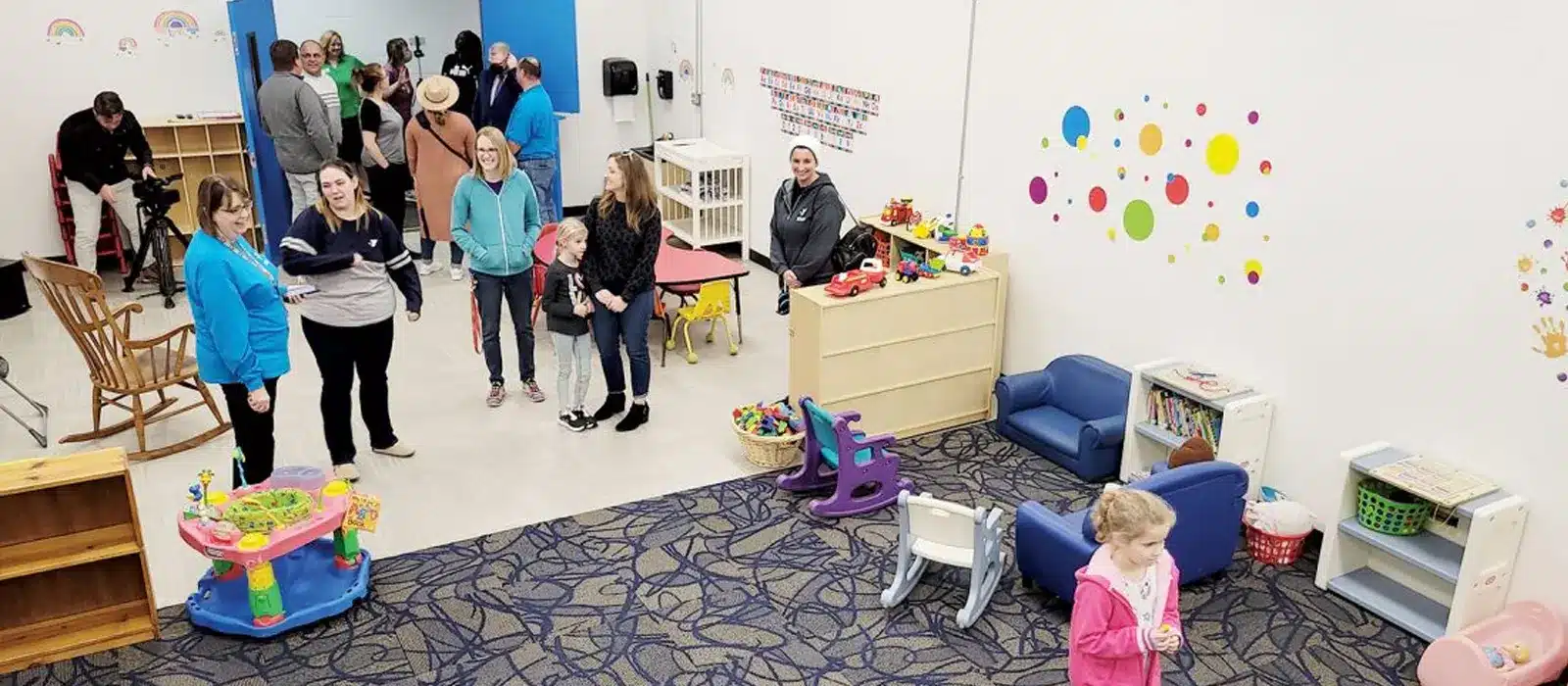
Check-in/Check-out Areas
The Check-in/Check-out Areas is the gateway to the day’s adventures in a childcare classroom. This area is crucial for establishing a routine, a sense of belonging, and security among the children.
- First Impressions & Emotional Prep: As children arrive, this areas helps in transitioning from home to the classroom setting. It’s where they are greeted, helping them emotionally prepare for the day.
- Organizational Skills: This area also teaches organizational skills. Children learn to take responsibility for their belongings, fostering independence.
- Parental Interaction: It’s a critical point for parent-teacher interaction. Brief exchanges during drop-off and pick-up provide valuable insights into the child’s at-home experiences and needs.
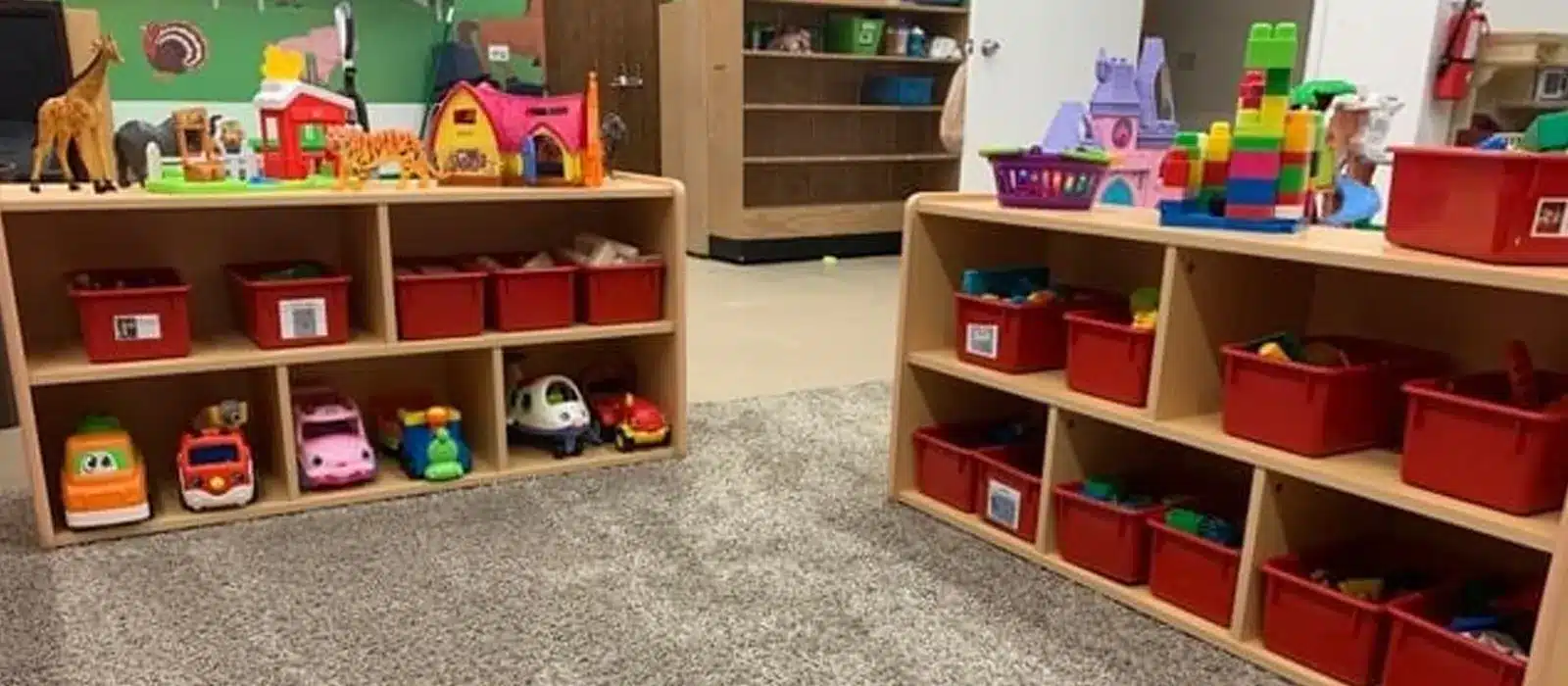
Cubby Storage Areas
The Cubby Storage Areas is more than just a place to store jackets and backpacks. It’s a personal space for each child within the classroom, serving several important functions:
- Sense of Ownership: Each child has their designated cubby, promoting a sense of ownership and responsibility.
- Organizational Learning: Organizing and maintaining their cubby helps children develop sorting and categorization skills.
- Personal Expression: Cubbies can be personalized, allowing children to express their individuality within the communal setting.
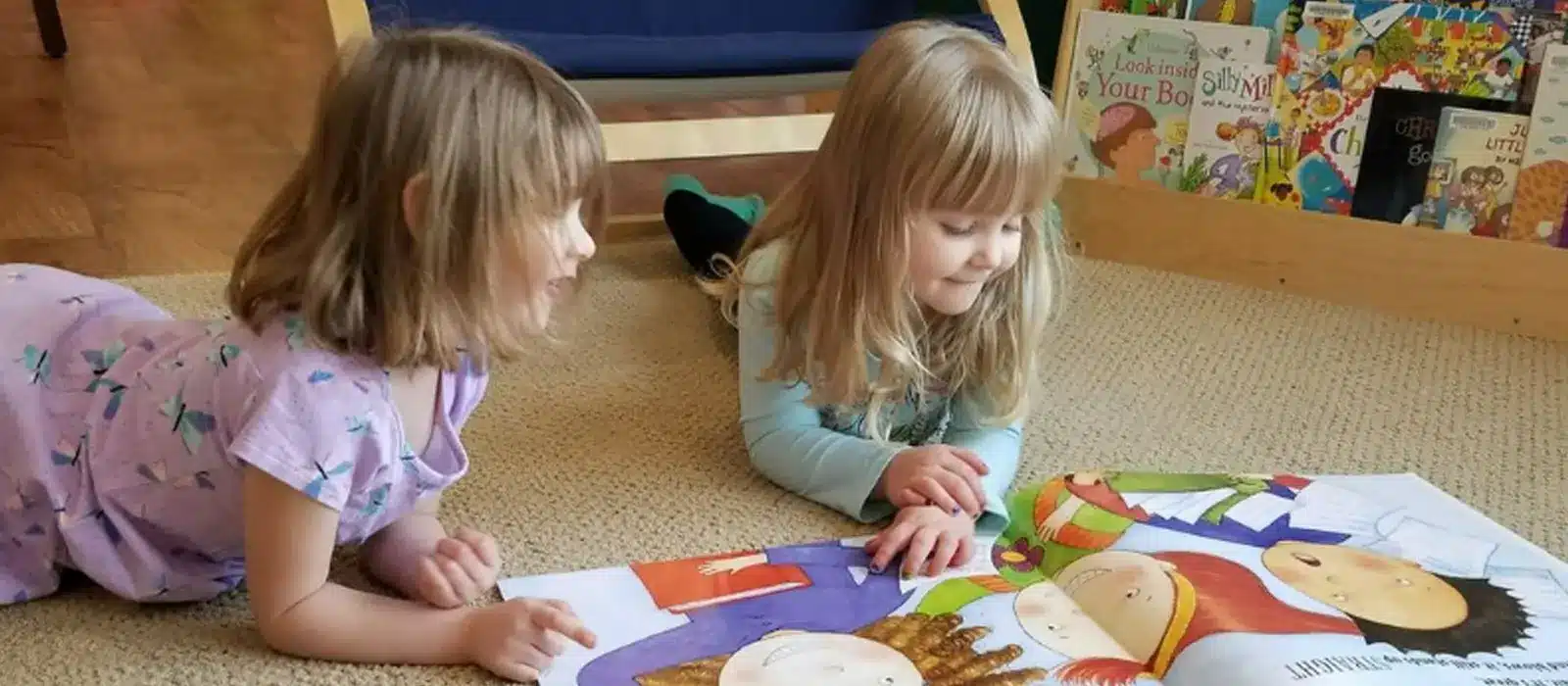
Quiet Activity Areas
In the Quiet Activity Areas, tranquility and focused learning take center stage. This area is essential for activities that require concentration and calm:
- Individual Learning: Activities like reading, puzzle solving, or quiet arts, which require more concentration, thrive here.
- Emotional Regulation: It’s a space where children can go to calm down, away from the bustle of more active areas.
- Diverse Learning Styles: Catering to children who thrive in quieter settings, this zone supports diverse learning styles and needs.
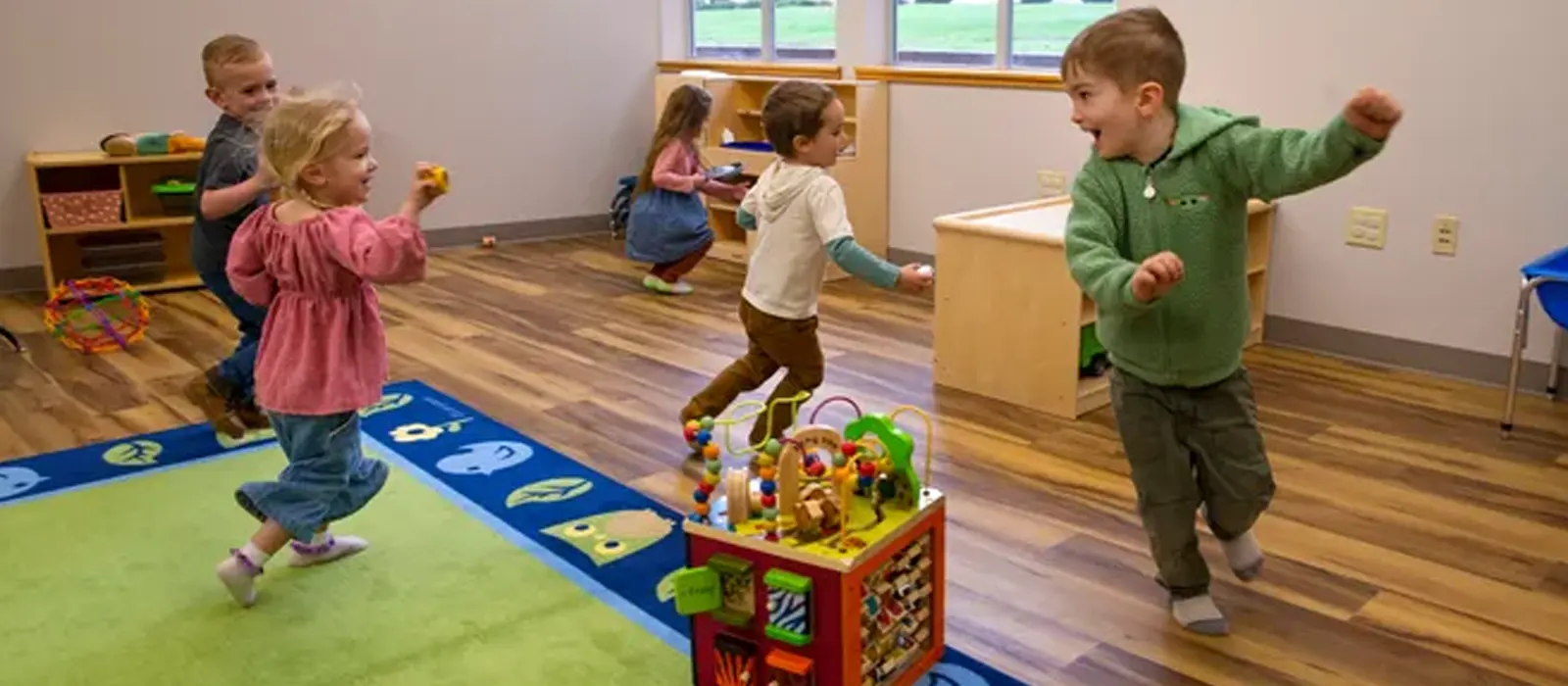
Open Activity Areas
The Open Activity Areas is the heart of collaborative and unrestricted play. It’s designed to foster social skills, creativity, and physical development:
- Social Interaction: Group games and activities here encourage teamwork and social skill development.
- Physical Activity: With enough space for movement, it’s ideal for activities that involve physical exercise and coordination.
- Creative Exploration: It’s a versatile space that can be adapted for various activities, encouraging imaginative and creative play.
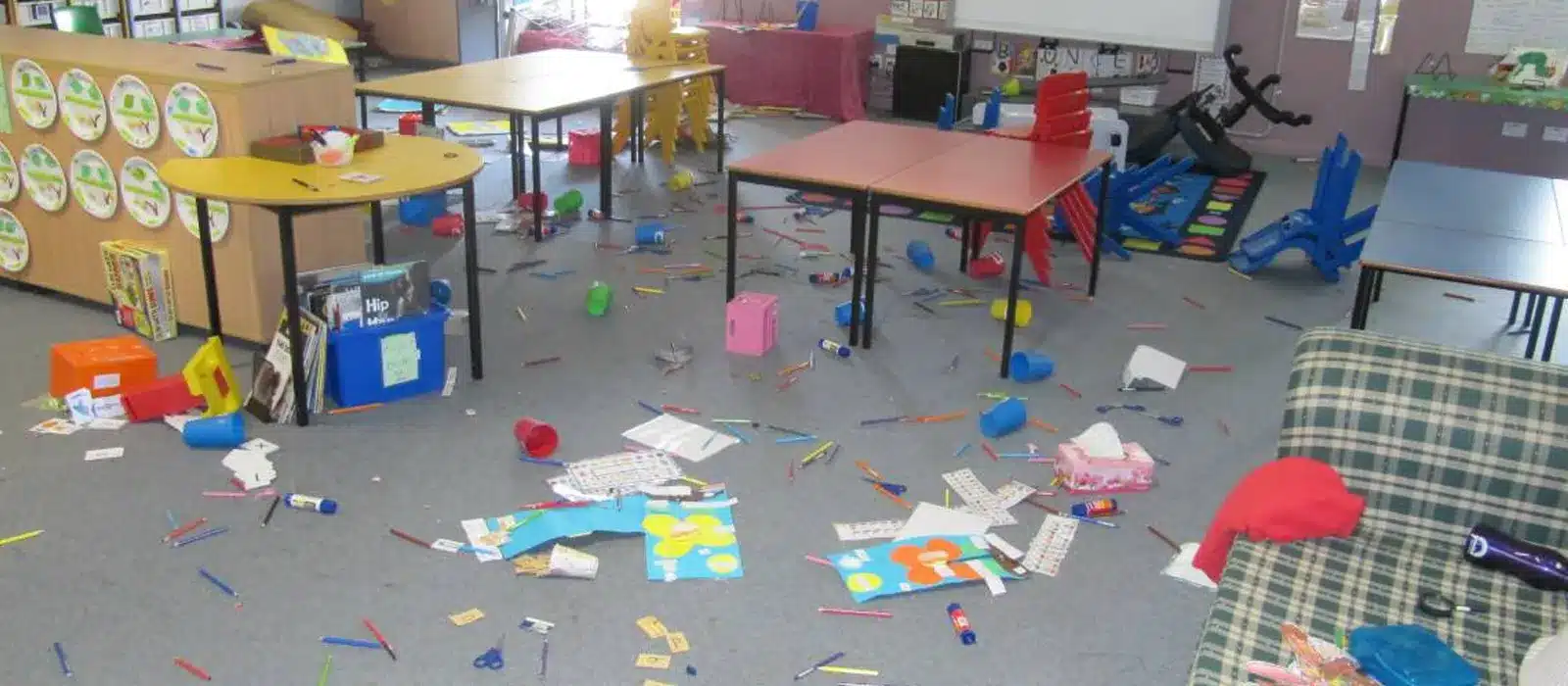
Messy Activity Areas
The Messy Activity Areas embraces the chaos and creativity that come with childhood exploration. It’s a space dedicated to activities that are, by nature, messy but incredibly beneficial for development.
- Sensory Play: Activities like painting, clay modeling, and water play are central, aiding sensory development.
- Creative Freedom: This areas encourages uninhibited creativity, where spills and splatters are part of the learning process.
- Fine Motor Skills: Handling different materials and tools helps in developing fine motor skills and hand-eye coordination.

Age-Specific Areas
Age-Specific Areas are tailored to meet the developmental needs of different age groups within the childcare setting:
- Developmentally Appropriate Activities: These areas ensure activities are suitable for the child’s age and developmental stage.
- Safety and Comfort: They provide a safe and comfortable environment for children to explore activities suited to their age.
- Skill Progression: As children grow, these areas offer progressively challenging and engaging activities, supporting continuous learning and development.
Speak with The Experts
Consulting with educational experts, including early childhood educators, child psychologists, and interior designers specializing in educational spaces, can provide valuable insights into effective classroom decoration. These experts can provide insight into the latest trends in daycare classroom decoration and design regarding age-appropriate decor, color psychology, and creating an inclusive environment that caters to children with different learning needs and cultural backgrounds..
Hosting workshops or Q&A sessions with these experts can be beneficial for staff and parents. This not only helps with daycare classroom decoration, but also ensures that the decor meets educational goals and child development theories.
The Significance of Wall Art in Daycare Classroom
In addition to decorating the walls, wall art in daycare centers is a medium for children to learn, explore and express themselves. Wall art can include educational posters, inspirational quotes, children’s artwork, or murals reflecting nature, stories, or multiculturalism.
The presence of wall art makes an environment more vibrant and attractive, stimulating children’s visual senses. It can serve as a conversation starter, stimulating curiosity and encouraging questions.
In addition, wall art can be used as an educational tool. For example, posters of letters or numbers can help teach basic literacy and numeracy skills. Maps, scientific charts or historical timelines can provide visual aids for more complex concepts.
Impact of Wall Art on Children’s Development
Wall art significantly impacts children’s cognitive, emotional, and social development. For young children, engaging with visually stimulating environments can enhance learning and memory retention. Colors, shapes, and patterns found in wall art can aid in the development of visual discrimination skills.
Emotionally, wall art can create a welcoming and comforting environment, helping children feel more secure and at ease in the daycare setting. It can also be a form of expression, allowing children to see their own creations displayed, which builds self-esteem and a sense of accomplishment.
Socially, wall art can encourage interaction and collaboration among children. Group projects like mural painting or collage creation foster teamwork and communication skills. Moreover, inclusive and diverse wall art can promote cultural awareness and sensitivity from a young age.
What Other Supplies Do I Need When Starting a Daycare Classroom?
When opening a daycare center, in addition to decorating the classroom, you’ll need a range of supplies to ensure a functional and safe environment. This includes child-sized furniture such as tables, chairs and storage units. In addition, consider restocking supplies such as art materials, educational toys, books and games that are integral to your child’s learning and play.
Essential safety equipment, including first aid kits, fire extinguishers and childproofing. Make sure all areas are free of hazards and comply with safety regulations.
Invest in practical items such as nap mats or cribs, feeding utensils, and hygiene items like hand sanitizer and paper towels. Technology like computers or tablets are valuable for educational purposes, but their use should be carefully managed.

Where can I find daycare classroom decoration?
Finding the right decorations for a daycare center can be challenging. Start by visiting online and brick-and-mortar educational supply stores, which often have special classroom decor sections. These stores typically offer a wide variety of products, from wall decals and educational posters to age-appropriate furniture and play area equipment.
Online marketplaces such as Amazon and Alibaba also offer a plethora of options for daycare decor. Here, you can find unique items from a variety of sellers around the world. However, make sure the products meet safety standards and are appropriate for the age group of your daycare.
You can find professional daycare classroom furniture manufacturer and suppliers online, usually they have many years of experience in the field of education and can help you not only with competitive products, but also about educational methods, room design and support customized services.
Optimize Your Daycare Operations with Xiha Montessori Solutions
At Xiha Montessori, we offer comprehensive solutions to optimize your daycare classroom. Our range of products includes not only high-quality furniture and decor but also educational materials tailored to various developmental stages. We understand the unique needs of daycare centers and provide customizable options to fit your specific requirements.
Our services extend beyond products. We offer consultation on classroom layout, decoration ideas, and resource management to maximize the effectiveness of your child care environment. Our team of experts stays updated on the latest educational trends and safety standards, ensuring that our solutions are both innovative and compliant.
Partnering with Xiha Montessori means you’re not just purchasing products; you’re investing in a holistic approach to child care that emphasizes quality, safety, and educational value. Our commitment is to support you in creating a nurturing, stimulating, and efficient daycare environment.
Conclusion
Decorating a daycare classroom is a thoughtful process that involves considering the developmental needs of children, the functionality of the space, and the educational goals of the curriculum. By focusing on age-appropriate decor, changing themes throughout the year, seeking expert advice, and tailoring room setups for different age groups, we can create an environment that is both stimulating and comforting. At Xiha Montessori, we are dedicated to providing resources and products that support this important work.










